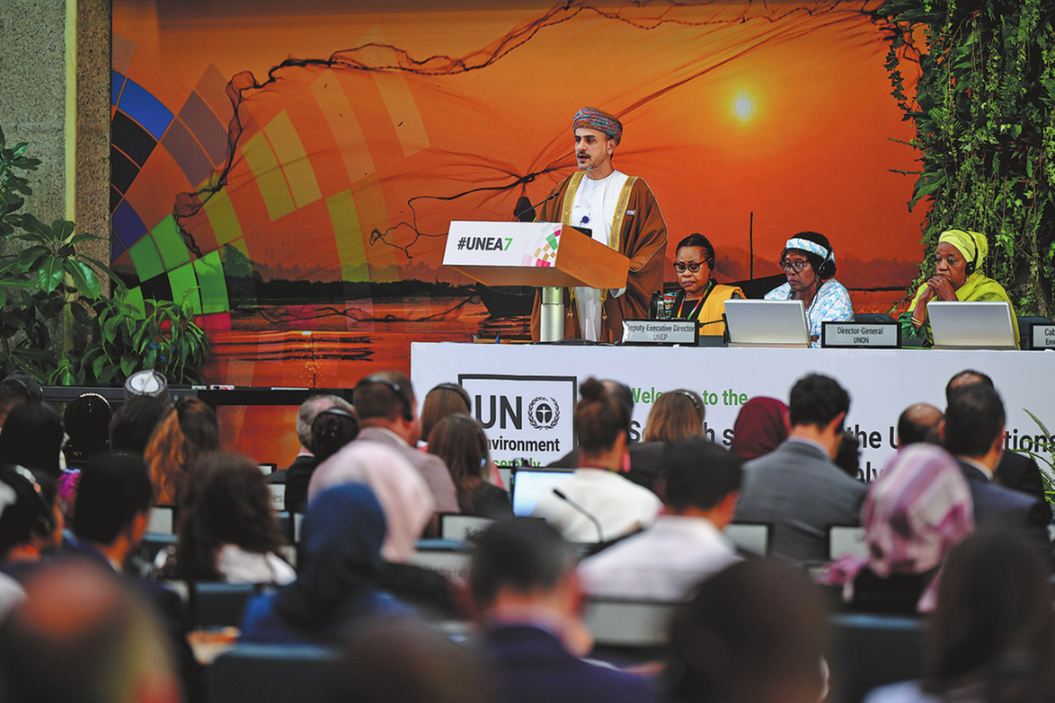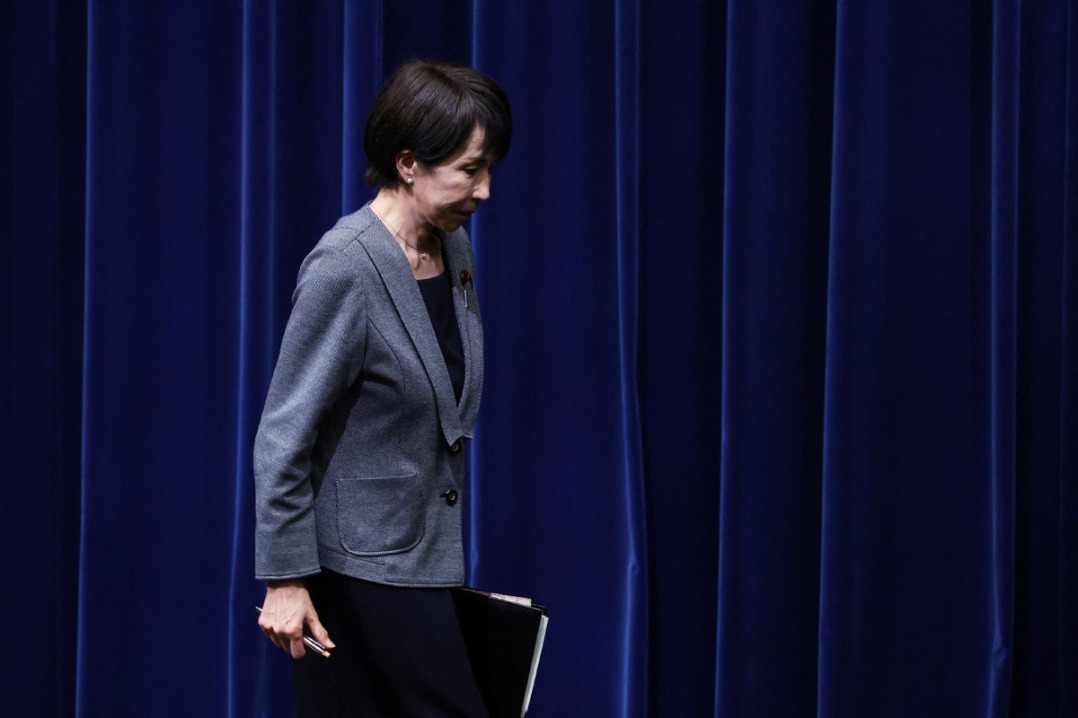For the common good


Regional experience and demonstrative effects of China-Southeast Asia cooperation have accelerated their joint building of the Belt and Road
The past decade has borne witness to the fruitful results of the high-quality development of the Belt and Road Initiative in Southeast Asia. The journey to jointly build the Belt and Road in Southeast Asia has comprised two phases: the first phase focused on strategic alignment and the initiation of major infrastructure projects, while the second phase has seen cooperation between China and Southeast Asia countries shifting toward new areas such as the digital economy and green economy.
Throughout this process, China and Association of Southeast Asian Nations have accumulated a series of successful experiences, including maintaining a high level of development consensus, establishing and utilizing multi-tiered cooperation mechanisms, and effectively balancing development and security goals. These experiences have had significant demonstrative value and provide valuable lessons.
First and foremost, China and ASEAN share a high level of development consensus. Historical practice prompted China and Southeast Asia countries to focus more on development after the end of the Cold War, and the choice of a development path characterized by openness and cooperation brought the two parties together.
After the 1997 Asian financial crisis and the 2008 global financial crisis, China and ASEAN gradually formed a substantive, dynamic and leading partnership based on practical development consensus and win-win cooperation. China's partnership with Southeast Asia is undoubtedly a priority for co-building the Belt and Road and will yield more cooperative results driven by new opportunities.
In recent years, despite the complex geopolitical changes in the region, rising protectionism, multiple transnational threats and technological transformations, China and ASEAN have been able to reaffirm and solidify their consensus on development and cooperation through joint statements. They have reiterated their commitment to a development-oriented and development-prioritized approach. By deepening cooperation through consultation, the two parties are devoted to building a meaningful, substantive and mutually beneficial China-ASEAN comprehensive strategic partnership, and to promoting peace, tranquility, prosperity and sustainable development. This ensures the sustainability of the Belt and Road Initiative and contributes to regional peace.
Second, there are effective multi-tiered cooperation mechanisms between China and ASEAN.One of the distinctive features of the cooperation mechanisms in Southeast Asia is ASEAN. As a regional organization that has successfully operated since the end of the Cold War, ASEAN has been able to consolidate consensus among Southeast Asia countries, enhance the cohesion among them, and play a central role in the regional structure by establishing mechanisms such as "10+1", "10+3", ASEAN Regional Forum and East Asia Summit. Therefore, China-Southeast Asia ties are characterized by the "dual-track approach", which stands for bilateral relations between China and each Southeast Asian country and China's relationship with ASEAN as a whole.
Catering to the diversity of Southeast Asian countries, bilateral relations are the fundamental approach for China's diplomatic engagement with Southeast Asia. At the same time, dialogue with ASEAN coordinates and guides regional cooperation, helping to advance cooperation and overall stability in the region. The "dual-track approach" is a key reason why Southeast Asia has become an exemplary region for co-building the Belt and Road.
In addition, ASEAN has released important documents such as the Master Plan on ASEAN Connectivity 2025 and ASEAN Outlook on the Indo-Pacific, which unified the development consensus within the region and promoted strategic alignment under the Belt and Road Initiative. This has made ASEAN a stabilizer and accelerator for China-ASEAN cooperation as a whole. Furthermore, various mechanisms under the "10+1" and "10+3" dialogue frameworks have provided significant support for the efficient advancement of the Belt and Road Initiative and its transition toward high-quality development.
Finally, China and ASEAN are strengthening strategic mutual trust and effectively balancing development and security goals.
Dialogue relations between China and ASEAN began with mutual concerns over the South China Sea. After lengthy negotiations, China and ASEAN countries signed the Declaration on the Conduct of Parties in the South China Sea (DOC) in 2002. Upholding the spirit of the DOC, disputing parties have exercised relative restraint, with no major maritime frictions, which has ensured stability in the South China Sea for almost a decade.
Moreover, the DOC also proposes enhanced cooperation in areas such as marine environment protection, marine scientific research, maritime navigation and safety, search and rescue, as well as combating transnational crime, which opened a new chapter of maritime cooperation between China and ASEAN.
Around 2010, various international and regional factors led to escalating tensions in the South China Sea and challenged the strategic mutual trust between China and ASEAN. In light of this, China and ASEAN countries reached a consensus on the guidelines for the implementation of the DOC in 2011.In 2013, both sides formally initiated negotiations on the Code of Conduct in the South China Sea. This created conditions for timely communication on South China Sea affairs and contributed to trust-building, thereby effectively maintaining overall stability in the South China Sea and ensuring the continued progress of the Belt and Road Initiative.
Furthermore, China joined the Treaty of Amity and Cooperation in Southeast Asia in 2003 and reached consensus with ASEAN to take the treaty as a guiding principle for handling development and security relations. This facilitated cooperation in priority areas outlined in the ASEAN outlook on the Indo-Pacific and strengthened strategic mutual trust and win-win cooperation among regional countries, including exploring mutually beneficial cooperation under the Belt and Road Initiative.
Practice has demonstrated that China and ASEAN members can balance development and security goals. Properly handling security issues will protect bilateral ties from significant setbacks, thus providing the necessary conditions for smooth economic cooperation. Through cooperation, China and ASEAN can achieve mutual benefits and ensure the sustainability of security.
The author is a researcher at the National Institute of International Strategy at the Chinese Academy of Social Sciences.
The author contributed this article to China Watch, a think tank powered by China Daily.
The views do not necessarily reflect those of China Daily.

































